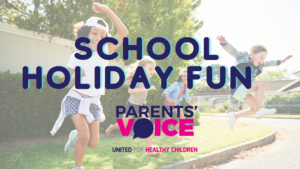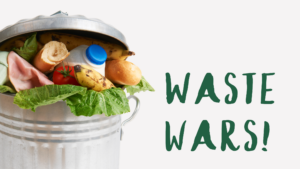A teaching moment at breakfast!
My 5 year old might soon be the spokesperson for ‘people for porridge’. His teacher recently congratulated him for eating a breakfast with good sustaining energy without too much sugar and salt. She compared and highlighted the children’s healthiest breakfast choices, then highlighted the healthiest choices. Our family talks about being careful of eating too much fat, sugar and salt. We try to eat well, remembering the new Australian Dietary Guidelines and the colourful daily plate image filled with grains, low fat dairy, fresh fruit and veg. So Mr 5 is familiar with the language and act of healthy eating.
At breakfast, Mr 5 asked how much sugar is really in oats, and how it compared with his brother’s cereal. I was tired and rushed, and could have postponed the chat until later (and probably then forgotten). I instead recognised the teaching opportunity, and pulled out the cereal packets and we looked at the nutrition information panels.
Then I stalled! Nutrition panels are confusing and hard to explain to a child. Filled with fine print and details, percentages, grams, comparable quantities, serving sizes, fibre, protein, they rely on sound understanding of nutrition.
I contemplated an easier way to explain it all to a 5 year old. Enter: FoodSwitch app.
I had never thought to show it to my children. I picked up my phone and showed him how to focus the camera on the barcode, and within moments bright green and orange spots popped up on screen. I then explained the traffic lights: Red means ‘caution’ & ‘less healthy’, Orange means ‘ok, but green is better’ and Green means ‘go’ and ‘the best choice’. The app also lists some similar product alternatives that rate better for sugar, salt and fat, great for when you are at the shops.
My son took to it quickly and enthusiastically. He asked me to get more from the pantry; other cereals, biscuits, pasta, grains… I suggested he put similar foods in order of how healthy each product was relative to others. When it came up blank, we used the inbuilt submission option to inform their database of the pack and nutrition information for quinoa. He was surprised when he discovered a savoury party biscuit had high levels of sugar (as well as high salt and fat). Some of the red spots reinforced my previous advice to limit foods like peanut butter, to small amounts sometimes.
Children gravitate towards technology and trust it, and I am constantly questioning the educational content of apps, so we both win! He asked me to put the app on his ipod and if he can use it at the supermarket too. The app doesn’t tell us what to buy, customise to personal needs or detail important nutrients like fibre, but provides a handy glimpse of what is in the food we buy and eat in an accessible way.
The FoodSwitch app empowers parents with information at a time when the food industry is resisting calls to provide clearer, more practical nutrition information on processed and packaged foods. It creates a competitive environment to encourage manufacturers to not only give people what they want, but to make foods healthier.



